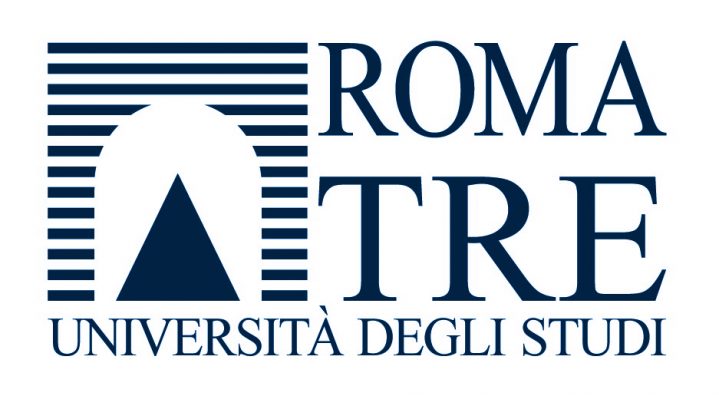COMUNICATO STAMPA
Roma, 15 settembre 2023 – Sembrava estinta in natura, e invece Nymphaea thermarum Eb. Fisch., la ninfea più piccola al mondo, endemica del Ruanda meridionale, è stata riscoperta il 29 luglio 2023 da una missione congiunta dell'Università Roma Tre, Italia (Prof. Thomas Abeli) e dell'Università di Coblenza, Germania (Siegmar Seidel, Sarah Marie Müller, Jean Marie Habiyakare).
La specie è stata scoperta e descritta nel 1987 dal professor Eberhard Fischer (Università di Coblenza, Germania) in una singola località del Ruanda ed è stata vista l'ultima volta nel suo areale storico nel 2008. Indicata come “Estinta in Natura” dall’Unione Mondiale per la Conservazione della Natura (IUCN) nel 2010 e nel 2019, si pensava che Nymphaea thermarum sopravvivesse solo in coltivazione in una manciata di orti botanici in tutto il mondo.
“Con nostra grande sorpresa, questa graziosa ninfea si trova ancora allo stato selvatico con una popolazione abbondante e vitale” afferma il professor Thomas Abeli del Dipartimento di Scienze dell'Università Roma Tre, a Roma, che non ha rivelato l'esatta ubicazione della popolazione ritrovata per evitare che possa essere danneggiata da appassionati e collezionisti di piante acquatiche.
La specie è stata ritrovata grazie alla collaborazione dei membri della comunità locale, che con entusiasmo hanno aiutato il team di ricercatori ad accedere ad alcune aree private per localizzare la specie. “Sebbene questa riscoperta sia certamente una buona notizia, ci sono minacce imminenti per le specie, in particolare l'attività mineraria”, continua Abeli, il quale ammette che “il percorso per conservare questa rara e iconica ninfea è tutt’altro che facile e richiederà uno spirito di collaborazione tra diverse parti interessate”.
“Con diverse incognite sulla biologia, sull’ecologia e sulla genetica di questa straordinaria pianta, la sua riscoperta è solo l’inizio di una più estesa ricerca che, si spera, porterà alla conservazione di questo gioiello ruandese” aggiunge il Siegmar Seidel (Università di Coblenza).
La Nymphaea thermarum può essere considerata un simbolo di speranza per le numerose specie che al momento risultano scomparse dal loro areale nativo e un simbolo di rinascita per uno dei paesi africani più impegnati nella conservazione della natura.
Contatti stampa
Ufficio Comunicazione
Alessia del Noce – Link identifier #identifier__18107-1alessia.delnoce@uniroma3.it | 339 5304817 -
Francesca Vitalini | Link identifier #identifier__191277-2francesca.vitalini@uniroma3.it | 339 3390878
Link identifier #identifier__134599-3ufficio.comunicazione@uniroma3.it
PRESS RELEASE
GERMAN-ITALIAN TEAM REDISCOVERED IN THE WILD THE SMALLEST WATERLILY IN THE WORLD
Nymphaea thermarum Eb. Fisch., the smallest waterlily in the world endemic to southern Rwanda has been rediscovered on the 29th of July 2023 by a joint field mission of the Roma Tre University, Italy (Prof. Thomas Abeli) and the University of Koblenz, Germany (Siegmar Seidel, Sarah Marie Müller, Jean Marie Habiyakare).
The species was discovered and described in 1987 by Prof. Eberhard Fischer (University of Koblenz, Germany) in a single location in southwestern Rwanda and was last seen in its original site in 2008. Assessed as Extinct-in-the-Wild (EW) by the IUCN in 2010 and 2019, the hot spring waterlily was thought to survive only in cultivation in a handful of botanic gardens around the world.
“To our great surprise, this cute waterlily is still found in the wild with a large and healthy population” says Prof. Thomas Abeli from the Department of Science of the Roma Tre University, in Rome, who did not disclose the exact location of the rediscovered population to avoid that it can be damaged by wetland plant enthusiasts.
The species was found thanks to the collaboration of the local community members, that eagerly helped the team of researchers to access some private areas to locate the species. “Although this rediscovery is certainly good news, there are imminent threats to the species posed by mining” Prof. Abeli continues, who admits “the pathway to conserve this rare and iconic waterlily is all but easy and will require a spirit of collaboration between several stakeholders”.
“With several unknowns about the population biology, ecology and genetics of this amazing plant, its rediscovery is just the beginning of a research journey that hopefully will lead to the conservation of this Rwandan treasure” adds Siegmar Seidel (University of Koblenz).
Nymphaea thermarum may be well considered a symbol of hope for the many species believed to have been lost from their native range and a symbol of renaissance for one of the most committed African countries in nature conservation.
Contatti stampa
Ufficio Comunicazione
Alessia del Noce – Link identifier #identifier__148620-4alessia.delnoce@uniroma3.it | 339 5304817 -
Francesca Vitalini | Link identifier #identifier__192041-5francesca.vitalini@uniroma3.it | 339 3390878
Link identifier #identifier__153925-6ufficio.comunicazione@uniroma3.it
Team italo-tedesco riscopre in natura la ninfea più piccola del mondo - Portale dello Studente
 Portale dello Studente
Portale dello StudentePortale dello Studente dell'Università degli Studi Roma Tre
Portale dello Studente

Portale dello Studente dell'Università degli Studi Roma Tre

